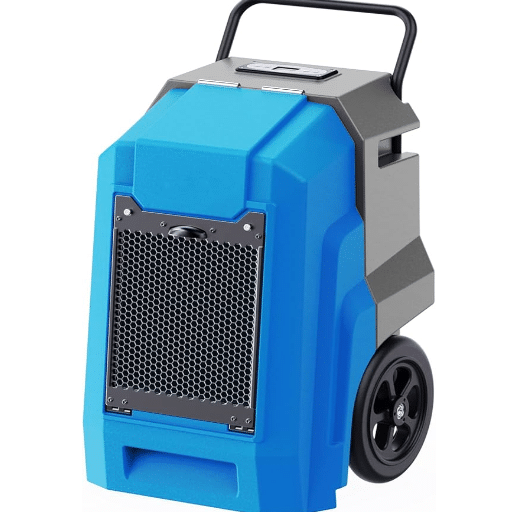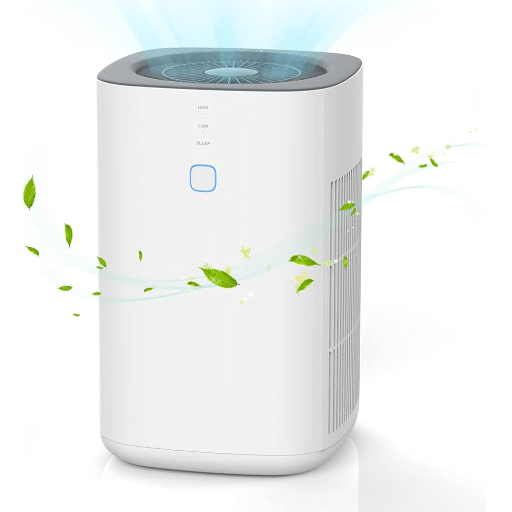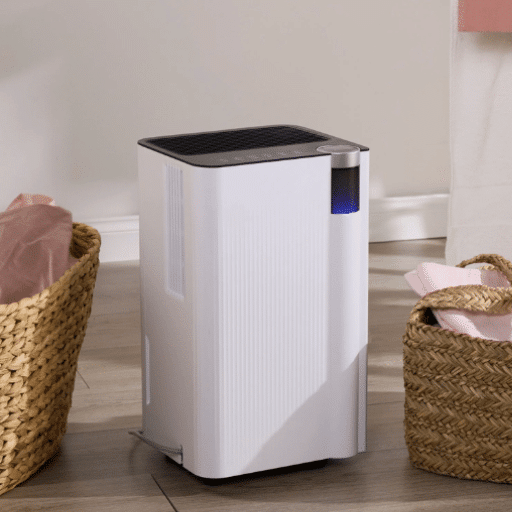Damp areas often result in discomfort as well as concern about air quality due to mildew and unpleasant odors. This leads to a common question among homeowners: Do dehumidifiers work to get rid of these smells and decrease mildew growth? This article analyzes the connection between odor development and excess moisture, how dehumidifiers tackle these issues, and whether they are a stand-alone solution. By controlling humidity alongside strategic odor elimination, you can create a livable space that is healthier and fresher.
How Does a Dehumidifier Work to Get Rid of Smells?
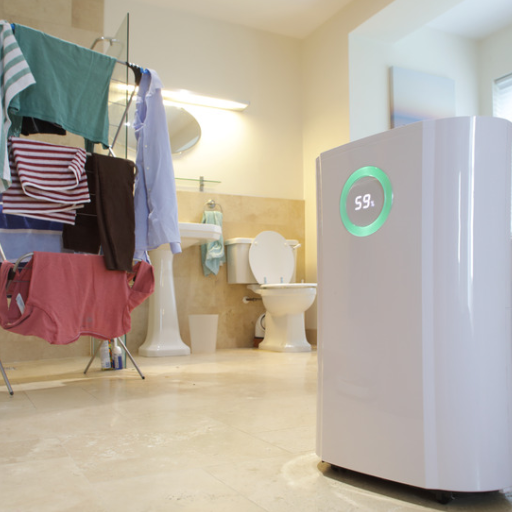
Excess moisture in the air is a common source of mildew and musty odors, and can easily be dealt with by employing dehumidifiers. By controlling humidity levels in the air, dehumidifiers block the growth of bacteria, mold, and mildew which are the primary reasons for bad odors. The devices operate by taking in air that contains moisture, cooling it to a temperature where liquid water can be separated (condensed), then extracting water from it, and discharging drier air into the space. These devices, by themselves, can greatly minimize odors resulting from dampness; however, combining them with proper ventilation and regular cleaning will ensure a better outcome.
What is a Dehumidifier and How Does it Operate?
Simply put, a dehumidifier is a device specifically created to manage the water vapor present in the air to help lower indoor humidity. It works by taking in humid air, cooling it to condense the water vapor, then storing or draining the water. The dehumidifier then expels the filtered air back into the space, which is now drier. This not only prevents the growth of mold and mildew but also gets rid of bad smells and improves the air quality, reducing indoor environmental risks.
Can a Dehumidifier Help with Musty Smells?
100% YES – a dehumidifier can assist with musty odors by eliminating excess moisture in the air. Musty smells are often due to mold or mildew growths in damp areas and a dehumidifier helps maintain reasonable humidity levels which inhibits mold development. Although it will not remove existing mold and mildew, it will help to mitigate further growth, which in turn improves air quality and freshness of the space making it more comfortable. Over prolonged periods, it will also be important to identify and deal with the source of moisture-causing issues.
How Effective is a Dehumidifier Against Mildew Smell?
Dehumidifiers work best in damp areas where mildew smells predominate. This is due to the nature of the problem- in excess moisture, which is the primary root of the odor. A dehumidifier also works best when it is used to reduce humidity levels below fifty percent as it enables the growth of mold and mildew leading to the removal of odor. Surfaces that have been cleaned also have the best results when paired with a dehumidifier. However, it is extremely important to use the dehumidifier properly to the right amount of space to avoid the return of mildew odors.
Is a Dehumidifier Enough to Combat Musty Smells and Mildew?

Aside from controlling odor and mildew, a dehumidifier does not help much on its own. Musty smells stem mainly from mildew and mold, which dehumidifiers hinder by limiting moisture in the air. However, other primary issues such as leaks, poor drainage, ventilation, and clutter need to be solved too. Mitigating mildew and musty smells in the long term requires not only a dehumidifier but also routine cleaning, structural repairs, and improved airflow. The outcome of these techniques is an enhanced living area that is more clean and pleasant.
When Should You Use a Dehumidifier?
If the humidity in your house is consistently over 50%, then using a dehumidifier is advisable, as this might cause musty odors, respiratory problems, and mold spores. Indoor humidity should ideally be between 30% and 50%. A hygrometer can be of use when monitoring humidity levels. Symptoms that tell you that a dehumidifier is warranted include moist window sills, smelling odors, mold growth, and curtain and wall dampness. Dehumidifiers are helpful also with places prone to moisture like bathrooms, basements, and washrooms. Cumulatively, dehumidifiers improve air quality by preventing indoor humidity imbalance, which in turn reduces moisture damage to homes.
How Does High Humidity in Your Home Contribute to Odors?
Having your home set at high levels of humidity may lead to the growth of mold and mildew which tend to produce musty smells. This also increases the rate of organic decomposition of materials and fabrics present in the home, especially wooden ones, which in turn produces unpleasant odors. Furthermore, moisture can also trap different types of airborne particles and pollutants which will lead to the air becoming stale and exacerbate bad odors over time. If you are willing to reduce these issues and have a home that smells fresh, then adjusting the humidity should do the trick.
Can Air Purifiers or Air Conditioners Help with Musty Smell?
Air purifiers and air conditioners can help reduce musty smells, but they serve different purposes in addressing the issue.
Air Purifiers: Air purifiers are effective in removing airborne particles, including mold spores, dust, and other pollutants that contribute to musty odors. Look for models equipped with HEPA filters, which can capture particles as small as 0.3 microns with 99.97% efficiency. Additionally, an air purifier with an activated carbon filter is ideal for eliminating odor-causing molecules. Keep in mind that while air purifiers improve air quality, they won’t directly address high humidity, which is the root cause of musty smells.
Air Conditioners: Air conditioners regulate indoor temperature and dehumidify the air, making them effective in reducing the excess moisture that fosters mold and mildew growth. To combat musty smells, ensure the air conditioner has a dehumidification feature and that its filters are clean and properly maintained. It’s also recommended to use an air conditioner with a built-in humidity sensor to maintain humidity levels below 50%, as this prevents mold from thriving. If odors persist, pairing an air conditioner with a dehumidifier or air purifier might provide a more comprehensive solution.
While both devices can improve overall air quality and reduce odors, addressing the source of moisture and ensuring proper ventilation are essential for long-term results.
How to Properly Use a Dehumidifier to Get Rid of Smells
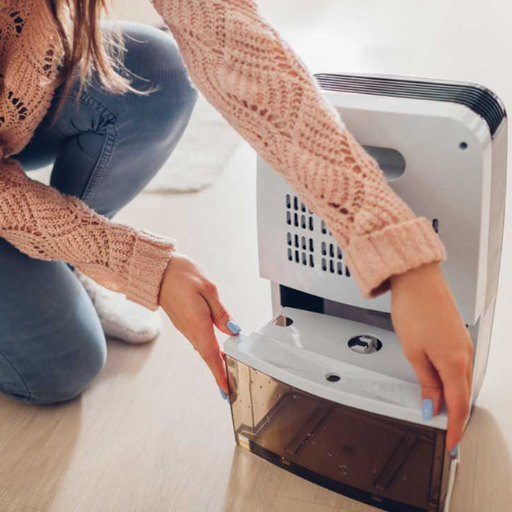
Musty odors associated with excessive humidity in your home can be efficiently dealt with by a dehumidifier. It might be necessary to use one when your home feels wet, windows are fogged, or there is a damp smell lingering indoors, especially in its basements and bathrooms. High humidity levels encourage the growth of mold and mildew which not only causes the odors but can also lead to the breakdown of materials which releases even more unpleasant smells. While air purifiers do a great job of getting rid of mold spores and air conditioners do slightly aid in reducing humidity, dehumidifiers deal with excess moisture in the air much more directly. For best results, the dehumidifier should be placed where it can get free airflow, the humidity setting should be adjusted to a range of 30%-50%, the water tank is drained of water frequently or a drainage hose should be hooked up, and the unit and filter should be cleaned from time to time. Following these directives will allow a dehumidifier to optimally control humidity levels and remove unwanted smells, leading to improved air quality within the house.
What are the Best Practices for Regular Cleaning?
The performance and life expectancy of your dehumidifier will always benefit from regular maintenance. For the sake of safety, start by turning off and disconnecting the unit from the power source. Clean the air filter with warm water and mild detergent every two weeks or as recommended by the manufacturer, ensuring it is completely dry before reinsertion. Dust can accumulate on the exterior and air intake grills, so wipe them down with a damp cloth. If your dehumidifier contains a water reservoir, wash it every week with soap and water or a vinegar solution to keep mold and bacteria at bay. Check the drainage hose regularly for clogs and rinse as necessary. To ensure cleanliness and prevent mold and bacteria, always consult your user guide for specific instructions tailored to your model.
How Does Removing Moisture from the Air Help?
Emphasis should be placed on removing moisture from the air because it affects indoor air quality, protects construction elements, and improves personal comfort. When humidity exceeds sixty percent (60%), microorganisms such as molds, dust mites, and bacteria flourish. This may pose health concerns by worsening allergic reactions or asthma symptoms. A dehumidifier operates optimally in the range of thirty to fifty percent (30-50%) relative humidity. At this range, risks are minimized and healthier environments are created.
From a technical perspective, balance maintenance helps prevent excessive humidity-related damage to walls, furniture, and electronics. Improved energy efficiency is also realized because drier air is automatically cooling, hence the burden on air conditioning systems is reduced. Accomplished dehumidification is easily achieved with modern units which operate at performance metrics like fifty (50) pints of moisture removal per day in standard conditions (80 degrees Fahrenheit/60% RH). The best results are achieved when the dehumidifier capacity fits the size of the room and the initial humidity level present in the room.
What Role Does the Filter Play in Odor Removal?
The filters in dehumidifiers aid in capturing dust, allergens, and bacteria that lead to bad air quality. For this reason, filters that use activated carbon are employed by many dehumidifier models. Additionally, these models outperform others in neutralizing smells due to their ability to adsorb VOCs and other odor-causing compounds. To further aid in improving indoor air quality, these models use HEPA filters which capture smaller particles to reduce allergens. To maintain optimal functioning, these dehumidifier models require regular maintenance, such as cleaning or replacing the filters which aids in permanent bad odor removal.
Why Does My Dehumidifier Smell Bad?
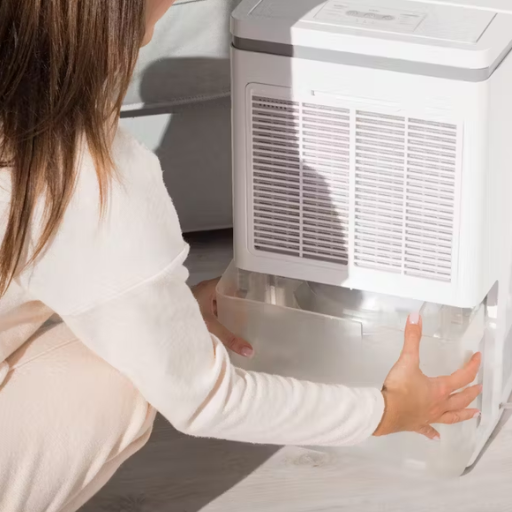
Accumulation of mold, mildew, and bacteria in the unit, specifically the reservoir, filter, and coils, can emit foul odors due to the lack of proper cleaning and moisture removal. A dehumidifier may develop a bad smell because these microbes thrive in uncleaned chunks of water and tend to create bad odors. Ideally, the reservoir should be cleaned, standing water should be regularly removed, and the filter should be washed or replaced. Other steps include actively checking for clogs or any drainage system buildup to allow efficient airflow and leave the unit smelling fresh.
What Causes a Strange Plastic Smell?
A peculiar burning plastic odor coming from your unit is usually the result of overheating wiring, insulation, and plastic components. It may also result from some debris or foreign material that has fallen inside the unit and is subsequently melting. To resolve the issue, I suggest that you shut down the unit immediately to inspect for visible damage or contact a professional for further assistance.
Can Mold or Mildew Cause Unpleasant Odors?
Indeed, mold and mildew may contribute to undesirable smells in your unit or apartment. These smells are often characterized as musty or somewhat earthy, and they result from the microbial volatile organic compounds (MVOC) produced during mold or mildew proliferation. This kind of growth usually occurs in places with high dampness, such as within air conditioners, ducts, and around water leaks. Attending to this particular concern requires adequate ventilation and cleaning of the affected area, which includes drying the area, and possibly the use of a dehumidifier. If this is the case, further action such as professional cleaning or mold removal may be necessary to eliminate the smell and avoid health complications.
How to Avoid Your Dehumidifier Becoming a Breeding Ground for Mold?
To ensure your dehumidifier does not foster mold growth, it is vital to follow proper maintenance steps. Begin by routinely removing the water tank and cleaning it daily, as it retains water which serves as an ideal mold breeding ground. To improve operation, unimpeded airflow, and prevent moisture entrapment, clean the filter at least once a month. When cleaning internal parts like the tank and intake grille, scrubbing the tank with a gentle soap or a vinegar solution, allows all parts to dry completely before reassembly, as thorough drying is essential. To prevent mold development, keep your dehumidifier in an area with adequate airflow, as well as reasonably stable humidity levels below 50%. Moreover, setting the unit on nonporous surfaces raises it above damp floors and allows better drainage. Following these suggestions will help you optimize your dehumidifier and keep it mold-free.
What Additional Steps Can Be Used to Get Rid of Odor in the Basement?
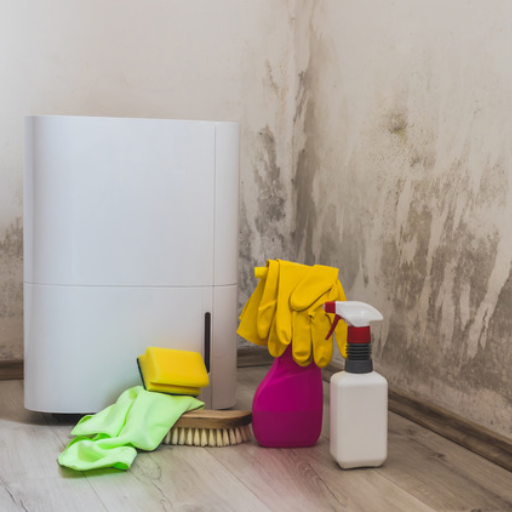
Combat basement odors by first addressing the source like moisture or inadequate air circulation, then tackle stagnant dehumidified air. Contain high humidity with dehumidifiers to help prevent mold and mildew. Following those measures also consider the steps below:
- Deep Cleaning – Frequently remove dust, trash, and organic matter from the basement that could facilitate the growth of mold and mildew.
- Improved Ventilation – Consider the use of air circulation and exhaust fans or air purifiers as this can help eliminate odors and improve air circulation.
- Odor Absorbers – Place odor absorbers such as baking soda or activated charcoal in areas prone to bad odors.
- Inspect Plumbing – Inspect for odors that are musty and check for stagnant water in the sump pump, pipes or drains.
- Seal Cracks – Apply sealants in floor and wall joints as well as cracks to inhibit the movement of moisture into the area.
Regular maintenance paired with the above steps can greatly aid in odor elimination and enhance basement conditions.
Can White Vinegar Help in Odor Removal?
Indeed, white vinegar is very effective in eliminating unwanted odors due to its natural sour and deodorizing properties. White vinegar eliminates alkaline odors and decomposes odor-causing particles. To remove odor using white vinegar:
- Dilution Ratio: For cleaning and odor removal, stir up an alkaline solution of one part white vinegar and two parts water.
- Application: Set bowls of undiluted white vinegar in the affected area for a period of 24 to 48 hours to absorb odors or use the diluted solution to wipe down surfaces.
- Effectiveness: White vinegar cuts down the effectiveness of odors arising out of mold, mildew growth, or any remaining organic matter.
Due to being non-toxic, biodegradable, and highly versatile, white vinegar proves to be a real economical opportunity when looking to remove bad odors. Just make sure to ventilate the area when using it since the smell of vinegar tends to be harsh at first although it dissipates rapidly.
How Does Improving Air Quality Affect Mildew Growth?
Accurate air quality management can greatly inhibit mildew growth by controlling factors that are favorable to its development. Mildew spreads best in damp, humid regions that lack proper ventilation. Enhancing the flow of air and reducing humidity can greatly reduce the chances of mildew forming. Drying surfaces with dehumidifiers, fixing leaking pipes, and ensuring proper ventilation can make spaces inhospitable for mildew. Moreover, capturing spores from the air can prevent the proliferation and establishment of mildew. All these practices help prevent mildew growth while ensuring a clean and healthy environment.
What Are the Benefits of a Whole-House Dehumidifier?
Managing indoor humidity all over the house with a whole-house dehumidifier offers great benefits. It does this by making the living environment more comfortable due to its ability to relieve stuffy air and clammy feelings caused by too much moisture. This also prevents the potential growth of mold and mildew protecting the home as well as the individual using the house from health issues. Reducing humidity can also protect the wooden floors, furniture, and other structural elements made out of wood from decaying and rotting over time. Apart from that, these dehumidifiers improve the efficiency of HVAC units since they lessen the burden placed on the air conditioning system which results in energy savings. By regulating the air quality, ideal balance is maintained thus leading to a living space that is not only healthy but fosters balance and wellness.
References
Frequently Asked Questions (FAQ)
Q: Can dehumidifiers remove the smell of smoke from your home?
A: Dehumidifiers can help to reduce the smell of smoke by extracting moisture out of the air, which often carries smoke particles. While they do not directly remove smoke odors like air purifiers, they improve air quality by reducing the humidity that can intensify smells.
Q: How do dehumidifiers help prevent the growth of mold and mildew?
A: Dehumidifiers help to create a less hospitable environment for mold and mildew by reducing the moisture in the air. Mold and mildew thrive in humid areas, so maintaining optimal humidity levels is key in preventing them.
Q: Will placing a dehumidifier in a humid area help with odor control?
A: Yes, placing a dehumidifier in a humid area can help with odor control. By reducing the moisture in the air, dehumidifiers prevent odors from becoming more pronounced and provide a cleaner, fresher environment.
Q: Can running a dehumidifier help reduce energy bills?
A: Running a dehumidifier can indirectly help reduce energy bills by maintaining a drier environment, making cooling systems more efficient. When the air is less humid, air conditioners do not have to work as hard to cool your home.
Q: How does a dehumidifier act to maintain air quality?
A: A dehumidifier acts to maintain air quality by reducing excess moisture that can serve as a breeding ground for mold, mildew, and bacteria. By controlling humidity, dehumidifiers help keep the air cleaner and healthier.
Q: Are there any cleaning products to use with a dehumidifier to enhance its effectiveness?
A: While dehumidifiers are designed to extract moisture, using a small amount of white vinegar in your cleaning routine can enhance their effectiveness. The good news is with regular cleaning, you can prevent odors and ensure your dehumidifier works efficiently.
Q: How often should you move the dehumidifier for optimal performance?
A: It’s advisable to move the dehumidifier as needed to areas where humidity is highest. This ensures it can extract moisture efficiently from different parts of your home, helping to prevent odors and maintain optimal humidity levels.
Q: Can a dehumidifier and keep humidity low help kill bacteria?
A: While dehumidifiers do not directly kill bacteria, they help prevent the conditions where bacteria thrive by keeping humidity levels low. This reduces the likelihood of bacterial growth and helps maintain a healthier indoor environment.
Q: What is the role of a dehumidifier as well as other tools in odor management?
A: Dehumidifiers play a crucial role in odor management by reducing moisture that can amplify smells. They complement other tools like air purifiers, which filter particles and odors directly, offering a comprehensive approach to maintaining a fresh-smelling home.

